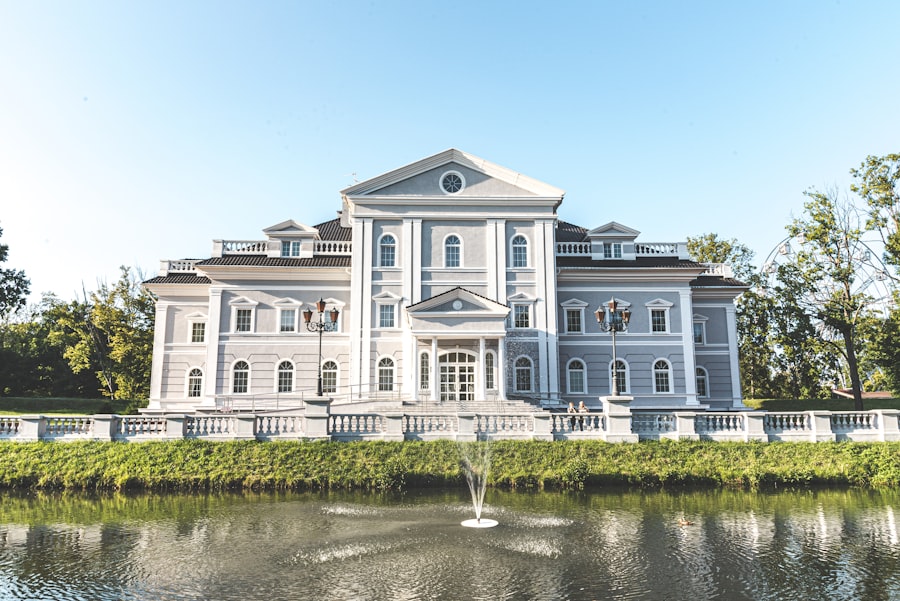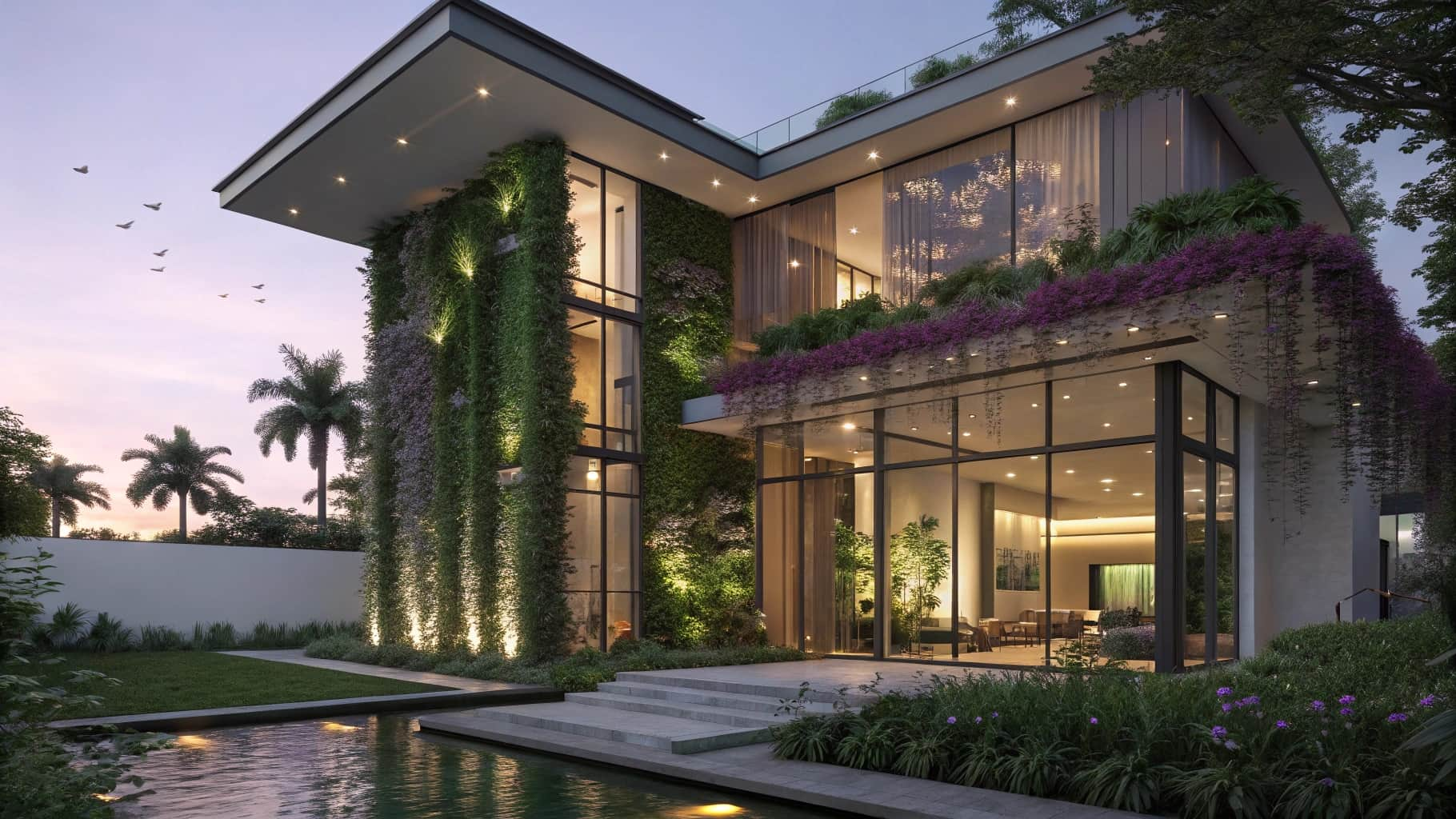Vertical gardens, also known as living walls or green walls, have emerged as a captivating trend in contemporary architecture, particularly within the realm of luxury mansions. These innovative structures allow for the integration of nature into urban living spaces, transforming otherwise stark facades into lush, vibrant displays of greenery. The concept of vertical gardening is not merely a decorative choice; it represents a profound shift in how we perceive and interact with our living environments.
In mansions, where space can often be at a premium, vertical gardens offer a unique solution to incorporate extensive plant life without sacrificing valuable ground area. The allure of vertical gardens lies in their versatility and adaptability. They can be designed to suit various architectural styles, from modern minimalist to classic opulence.
Homeowners can select from a diverse array of plants, including flowering species, ferns, and even edible herbs, allowing for a personalized touch that reflects individual tastes and lifestyles. As more affluent homeowners seek to create serene retreats within their residences, vertical gardens have become an essential element in the design of luxurious living spaces, merging aesthetics with functionality.
Benefits of Vertical Gardens in Mansions
The benefits of vertical gardens extend far beyond mere aesthetics; they encompass a range of practical advantages that enhance the quality of life for residents. One of the most significant benefits is the improvement of indoor air quality. Plants naturally filter pollutants and toxins from the air, contributing to a healthier living environment.
In mansions, where large windows and open spaces often invite outdoor air, vertical gardens can act as natural air purifiers, reducing the presence of harmful substances and promoting overall well-being. Additionally, vertical gardens can provide thermal insulation for mansions. The layers of vegetation create a buffer against temperature fluctuations, helping to regulate indoor climates.
This can lead to reduced energy consumption for heating and cooling, ultimately resulting in lower utility bills. In an era where sustainability is increasingly prioritized, the energy efficiency offered by vertical gardens aligns perfectly with the values of environmentally conscious homeowners. By investing in such green solutions, mansion owners not only enhance their living spaces but also contribute to broader ecological goals.
Aesthetic Appeal of Vertical Gardens in Mansions

The aesthetic appeal of vertical gardens is undeniable; they serve as striking focal points that can elevate the overall design of a mansion. The interplay of colors, textures, and forms created by various plant species can transform bland walls into dynamic canvases that change with the seasons. For instance, a vertical garden featuring vibrant flowering plants can create a stunning visual display during spring and summer, while evergreens can provide year-round greenery.
This dynamic nature allows homeowners to curate their living spaces continuously, reflecting personal style and seasonal changes. Moreover, vertical gardens can enhance the architectural features of a mansion. They can soften harsh lines and angles, creating a more harmonious relationship between the built environment and nature.
For example, a modern mansion with sharp geometric shapes can be complemented by cascading vines or lush foliage that introduces organic curves and softness. This juxtaposition not only enhances visual interest but also fosters a sense of tranquility and connection to nature, which is often sought after in luxury living.
Environmental Impact of Vertical Gardens in Mansions
The environmental impact of vertical gardens is profound and multifaceted. One of the most significant contributions is their role in biodiversity enhancement. By incorporating various plant species into urban settings, vertical gardens provide habitats for birds, insects, and other wildlife that may otherwise struggle to find refuge in densely populated areas.
This increased biodiversity contributes to healthier ecosystems and promotes ecological balance within urban environments. Furthermore, vertical gardens play a crucial role in mitigating urban heat island effects. Cities often experience higher temperatures than surrounding rural areas due to extensive concrete surfaces that absorb and retain heat.
Vertical gardens help combat this phenomenon by providing shade and releasing moisture through transpiration, which cools the surrounding air. In mansions located in urban settings, this cooling effect can significantly enhance outdoor comfort levels, allowing residents to enjoy their outdoor spaces more fully during hot summer months.
Practical Considerations for Vertical Gardens in Mansions
When considering the installation of vertical gardens in mansions, several practical factors must be taken into account to ensure successful implementation. First and foremost is the selection of an appropriate location. Vertical gardens require adequate sunlight exposure for optimal plant growth; therefore, identifying areas that receive sufficient natural light is essential.
Additionally, considerations regarding accessibility for maintenance and care should be made to ensure that all parts of the garden can be easily reached. Another critical aspect is the choice of irrigation systems. Vertical gardens often require specialized watering solutions to ensure that plants receive adequate moisture without over-saturating the wall structure.
Drip irrigation systems are commonly employed for this purpose, allowing for efficient water delivery directly to the roots while minimizing waste. Furthermore, selecting the right substrate for plant growth is vital; lightweight soil alternatives or hydroponic systems may be necessary to prevent excessive weight on structural elements.
Maintenance and Care of Vertical Gardens in Mansions

Watering and Humidity
Regular watering is essential, particularly during dry spells or hot weather when plants may require more moisture than usual.
Pest and Pruning Control
Homeowners should also monitor for pests and diseases that could threaten plant health; early detection is key to preventing widespread issues. Pruning is another important aspect of vertical garden maintenance. As plants grow and mature, they may require trimming to maintain their shape and prevent overcrowding.
Fertilization and Nutrients
This not only ensures that each plant receives adequate light and air circulation but also promotes healthy growth patterns. Additionally, periodic fertilization may be necessary to replenish nutrients in the growing medium, particularly if plants are showing signs of nutrient deficiency.
Examples of Mansions with Vertical Gardens
Several notable mansions around the world have embraced vertical gardens as integral components of their design. One striking example is the Bosco Verticale (Vertical Forest) in Milan, Italy—a pair of residential towers adorned with over 9,000 trees and 20,000 plants across their facades. While not a traditional mansion in the single-family sense, this architectural marvel exemplifies how vertical gardens can redefine urban living spaces by creating lush environments that promote biodiversity.
In the United States, the Edible Schoolyard Project at Berkeley’s Martin Luther King Jr. Middle School features a vertical garden that serves both educational and aesthetic purposes. While primarily focused on teaching children about sustainable agriculture and healthy eating habits, this project showcases how vertical gardening can be integrated into larger community initiatives within residential settings.
Another example is the Villa Vals in Switzerland, which features a stunning green wall that blends seamlessly with its mountainous surroundings. The design not only enhances the visual appeal but also provides insulation against harsh weather conditions typical of alpine environments.
The Future of Vertical Gardens in Mansions
As urbanization continues to rise and environmental concerns become increasingly pressing, the future of vertical gardens in mansions appears bright. These innovative green solutions offer a unique opportunity for homeowners to reconnect with nature while enhancing their living spaces’ aesthetic and functional qualities. With advancements in technology and horticultural practices, vertical gardening will likely become even more accessible and efficient.
Moreover, as luxury homeowners increasingly prioritize sustainability and wellness in their living environments, vertical gardens will play an essential role in shaping future architectural trends. The integration of nature into residential design will not only enhance individual properties but also contribute positively to urban ecosystems as a whole. As we look ahead, it is clear that vertical gardens will remain a vital component of mansion design—bridging the gap between opulence and ecological responsibility while fostering a deeper connection between people and nature.
FAQs
What are vertical gardens?
Vertical gardens, also known as living walls, are gardens that are grown vertically, using a trellis or other support system. They can be installed indoors or outdoors and are a popular way to add greenery to urban spaces.
Why do some mansions have vertical gardens?
Some mansions have vertical gardens as a way to incorporate greenery into their architecture and design. Vertical gardens can provide aesthetic appeal, improve air quality, and create a sense of tranquility in a mansion’s outdoor space.
What are the benefits of vertical gardens in mansions?
Vertical gardens in mansions can provide numerous benefits, including improved air quality, insulation, noise reduction, and a visually appealing addition to the property. They can also help to create a more sustainable and eco-friendly living environment.
How are vertical gardens maintained in mansions?
Vertical gardens in mansions require regular maintenance, including watering, pruning, and fertilizing. Some vertical gardens may also require specialized irrigation systems to ensure that the plants receive adequate water and nutrients.
What types of plants are suitable for vertical gardens in mansions?
A wide variety of plants can be used in vertical gardens, including ferns, succulents, herbs, and flowering plants. The choice of plants will depend on factors such as the climate, sunlight exposure, and the aesthetic preferences of the mansion owner.

